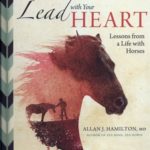Standing at the top and looking down to an abyss of red, brown, purple and green jagged peaks and powdery mounds of cinder, it’s hard to believe that people ride 2500 feet down into the crater of a volcano or that anyone travels into this active volcano at all! This unusual setting and the fact that you can then ride into a rainforest in the same national park brings it to number four in our top ten countdown of great places to ride.
The horses that undertake the journey on the Sliding Sands Trail from around 10,000 feet to approximately 7500 feet, the crater floor, have to be fit and adventurous, as do the riders. Descending into the crater means adjusting to a dramatic changes in altitude. The weather, too, can change quickly. Clouds roll in and out, covering the entire bowl in a sheet. Riders may be lost in a sea of clouds, not be able to see in front of their horse’s head. This erie occurrence may be replaced quickly, as the sun beats down, clearing the clouds and opening up the gigantic space that is the crater.
Descending through the switchbacks, the temperature grows increasingly cooler. Brown and red cinders slide and crunch beneath horses? hooves. Haleakala means House of the Sun. During the day, as the sun changes position in the sky, so do the surrounding colors of Haleakala?s terrain.
Kipahulu, Maui
To get to this remote section of Maui, visitors must first brave the Road to Hana, a winding scenic highway that runs along the Northeastern coast of Maui. With over six-hundred curves and many one land bridges, driving the sixty-eight miles to Kipahulu takes at least three hours. Along the way, there are many tempting places to stop to see waterfalls, rainforests and awesome coastal cliff views.
Maui Stables is run by the natives of Kipahulu, whose ancestors have lived in this region for hundreds of years. Living here has meant learning to survive off of the land. Elders have passed their way of life down from generation to generation. Each morning, the Alaka?i or guides gather together to say an oli or chant, learned from their elders. Riders are asked to participate before they mount up and ride.
This area is part of Haleakala National Park, but so different from the volcanic terrain of the crater. It’s humid, wet and green here and teeming with many endangered birds. Near the end of the ride, Waimoku Falls, the tallest waterfalls on Maui, rise 400-feet. These falls are backed by lava rocks and abundant vegetation in this pristine, cultural area of Maui.
For more information, visit Equitrekking.com and EquitrekkingTravel.com







